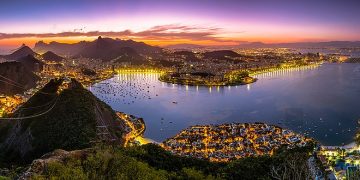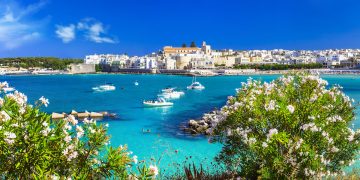Introduction
Nestled in the northern regions of Italy, the Dolomiti Mountains (or Dolomites) are a UNESCO World Heritage Site and a haven for nature enthusiasts, adventure seekers, and cultural explorers. Known for their jagged peaks, pristine lakes, verdant valleys, and charming alpine villages, this mountain range offers an unforgettable travel experience. However, to fully enjoy its beauty, a well-planned trip is essential.
This article provides a comprehensive guide to traveling in the Dolomiti Mountains, covering essential tips, travel logistics, must-see spots, cultural etiquette, and more.
1. When Is the Best Time to Visit the Dolomites?
1.1 Seasonal Highlights
- Spring (April to June):
- Melting snow unveils lush greenery and blooming wildflowers.
- Ideal for nature walks and fewer crowds, though some higher trails may remain snow-covered.
- Summer (July to August):
- Peak season for hiking, climbing, and cycling.
- Clear skies and warmer temperatures make it perfect for outdoor activities, but expect larger crowds.
- Autumn (September to October):
- Fewer visitors, cooler weather, and stunning autumn foliage.
- A quieter time for exploring popular trails and viewpoints.
- Winter (December to March):
- A snowy wonderland for skiing, snowboarding, and snowshoeing.
- The Dolomiti Superski area offers over 1,200 kilometers of ski slopes.
1.2 Optimal Visit Duration
- A week is ideal to cover key highlights, though shorter trips of 3-5 days can still provide a fulfilling experience.
2. How to Get to the Dolomites?
2.1 Nearest Airports
- Venice Marco Polo Airport (VCE): Approximately 2.5-3 hours by car.
- Innsbruck Airport (INN): Located in Austria, about 2 hours away.
- Milan Bergamo Airport (BGY): Around 4 hours by car.
2.2 Transportation Options
- Car Rental:
- The most flexible option for exploring remote areas and smaller villages.
- Ensure your vehicle is equipped for mountainous roads, especially in winter.
- Public Transport:
- Trains and buses connect major towns like Bolzano and Cortina d’Ampezzo, but reaching remote spots may require additional planning.
3. What Are the Must-Have Travel Essentials?
3.1 Clothing and Gear
- Summer:
- Lightweight, moisture-wicking layers, sturdy hiking boots, and a waterproof jacket.
- Winter:
- Insulated clothing, snow boots, gloves, and a thermal base layer.
3.2 Navigation Tools
- Download offline maps or use a GPS device, as cellular coverage can be spotty in remote areas.
3.3 Travel Documents
- Valid ID or passport, and international driving permit if required.
4. Where to Stay in the Dolomites?
4.1 Accommodation Types
- Hotels and Resorts: Luxurious options in towns like Cortina d’Ampezzo.
- Mountain Huts (Rifugios): Unique alpine lodgings for hikers, offering basic amenities and spectacular views.
- Apartments and Chalets: Ideal for families or longer stays.
4.2 Popular Bases
- Bolzano: A gateway to the Dolomites with a blend of Italian and Austrian cultures.
- Cortina d’Ampezzo: Known as the “Queen of the Dolomites,” perfect for skiing and luxury stays.
- Ortisei and Val Gardena: Scenic villages with access to Seceda Ridge and Alpe di Siusi.

5. What Are the Top Destinations in the Dolomites?
5.1 Iconic Peaks and Hikes
- Tre Cime di Lavaredo: Stunning trio of peaks accessible via scenic hikes.
- Seceda Ridge: Known for its jagged cliffs and panoramic views.
- Marmolada Glacier: The highest peak and a must-visit for climbers.
5.2 Lakes and Waterfalls
- Lago di Braies: Emerald-green waters surrounded by dramatic peaks.
- Lago di Carezza: Famous for its vivid reflections and colors.
5.3 Scenic Drives
- Great Dolomite Road: A 110-kilometer route offering breathtaking vistas.
6. How to Explore the Dolomites Responsibly?
6.1 Respect Nature
- Stick to marked trails to protect fragile ecosystems.
- Avoid littering and carry reusable bottles and containers.
6.2 Follow Local Guidelines
- Be mindful of fire risks during dry seasons.
- Respect local wildlife by observing from a distance.
7. What Activities Should You Try in the Dolomites?
7.1 Summer Adventures
- Hiking and Climbing: Over 18,000 kilometers of trails, from easy walks to challenging via ferrata routes.
- Cycling: Scenic routes for mountain biking and road cycling.
7.2 Winter Sports
- Skiing, snowboarding, and sledding are popular in resorts like Cortina and Alta Badia.
8. What Is the Local Culture Like?
8.1 Ladin Traditions
- The Ladin people are an ethnic group native to the Dolomites, known for their unique language and customs.
8.2 Cuisine
- Must-try dishes include speck, canederli (dumplings), and strudel.
9. Travel Tips for Families and Groups
- Opt for family-friendly trails like Alpe di Siusi.
- Look for accommodations offering kid-friendly amenities and activities.
10. Conclusion
The Dolomiti Mountains are a destination that offers something for everyone, whether you’re seeking adventure, relaxation, or cultural immersion. With careful planning, you can make the most of your journey and create memories that will last a lifetime. What makes the Dolomites truly special is the way they inspire awe and connect visitors to the natural world in an unparalleled way.





















